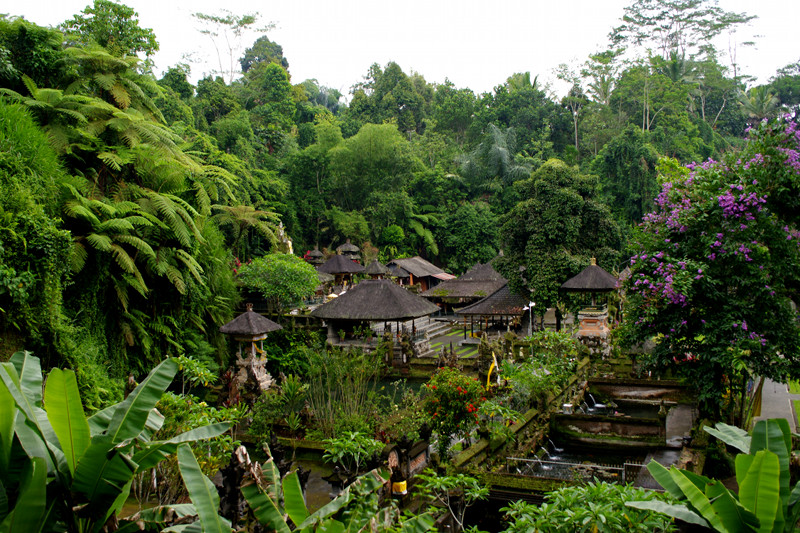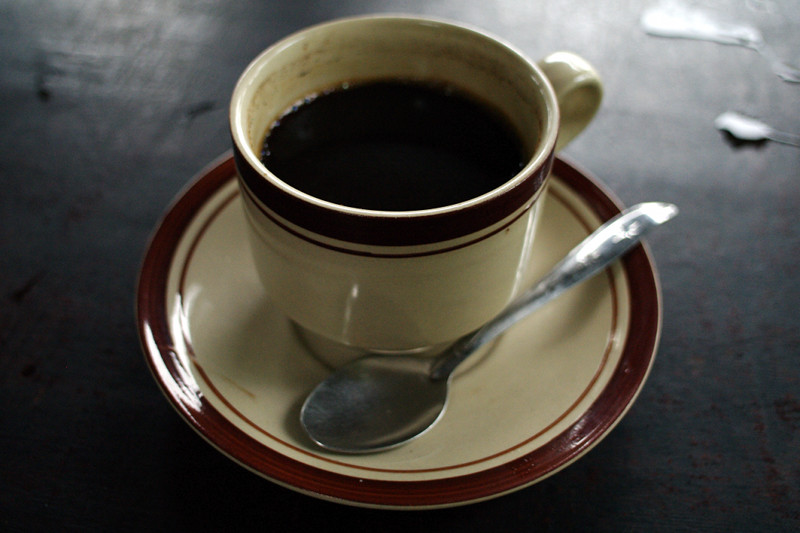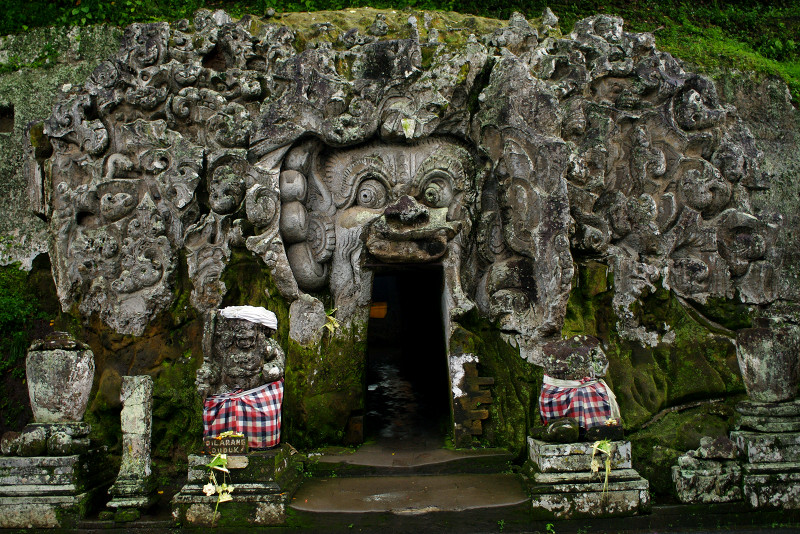The long way from Sanur to Ubud
Last Friday, we finally left the comfort of Tropical Bali and ventured deeper into the island. We hired a driver recommended by the hotel to take us to Ubud (a little under an hour away), where we planned to spend the next week.
It took a leap of faith on both our parts to leave Sanur without knowing where we were going to stay that night. We knew there were dozens of homestays and hotels in and around Ubud, but we were a little worried about not having a concrete reservation in advance of the Christmas holidays. We jumped at the first place we looked at, as they had availability and a pool, but after committing, we immediately had “buyer’s remorse”: on second glance the pool looked a little scuzzy, and our bungalow was musty and not the cleanest. This weighed on us at first, but we knew that though we’d verbally committed to staying for ten days, nothing prevented us from seeking out another spot after we acquainted ourselves with the area.
When we hired the driver, the owner of Tropical Bali suggested that we use our trip to Ubud as an excuse to take a tour of the area. We said “Sure” without so much as a clue as to where we’d be going or how much it would cost. As it happened our driver Komang was young, well-spoken, urban-attired (fancy jeans, mirror shades, Billabong cap with a flat rim set at an angle, etc), and ended up taking us on an impressive and informative full-day tour of the sights around Ubud.
We stopped for a photo op at the terraced-hillsides of Tegallalang, learned about Hinduism and temple design at the Holy Spring Water Temple (Tirtha Empul or Tampak Siring), and had lunch at a restaurant overlooking the active volcano Gunung Batur. And then it started to rain—heavily. So much that the volcano completely disappeared from view.
The next stop was an agrotourism site where we saw all sorts of tropical plants, fruits, and spices growing in the wild, including cacao (chocolate), coffee, pineapple, cinnamon tree, clove, snakefruit, passionfruit, tumeric, lemongrass, ginseng, and more. But the highlight was seeing the famous civet cat, and its infamous product, Kopi Luwak, aka poo-poo coffee. I’ll let Wikipedia explain:
Kopi luwak is coffee made from the beans of coffee berries which have been eaten by the Asian Palm Civet and then passed through its digestive tract. A civet eats the berries for their fleshy pulp. Passing through a civet’s intestines the beans are then defecated, keeping their shape. After gathering the scat, thorough washing, sun drying, light roasting and brewing, these beans yield an aromatic coffee with much less bitterness, widely noted as the most expensive coffee in the world.
Yes, we had a cup. It cost 30,000 rupiah (or $3) and it tasted like, well, coffee.
It was raining so hard that we ended up skipping a hillside temple (Gunung Kawi I believe), and went instead to the Elephant Cave (Goa Gajah). At that point we were pretty toured out. Komang deposited us at our bungalow around 4 in the afternoon. The price for seven hours of transportation and tour guiding came to 400,000 rupiah or $40, which seemed very reasonable to us. In the end we had little to worry about, and even the misgivings about our choice of bungalow lessened somewhat after a Bintang beer at the bar with access to our first free wifi in a week.

Panorama of the Tegallalang rice terraces after harvesting





Gorgeous! More pictures!